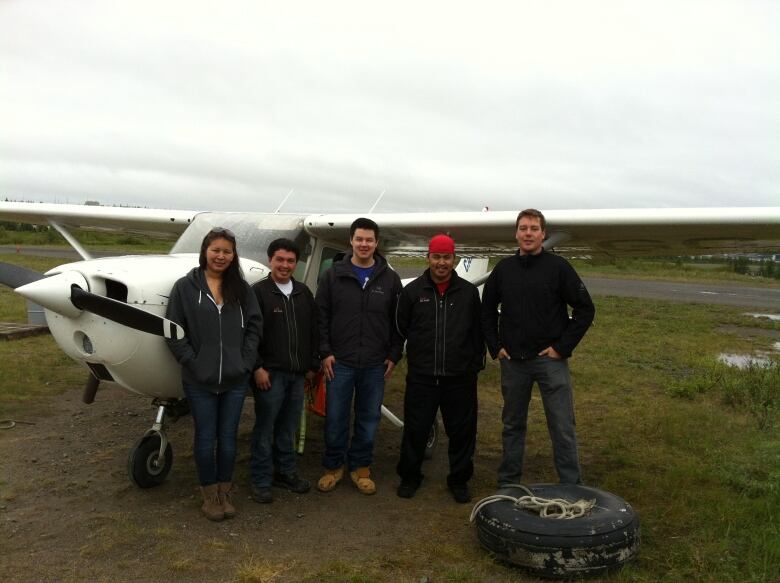Flight school in Nunavik trains Inuit to fly in the North
So far, Air Inuit has 17 Inuit pilots out of 131 pilots and has only lost one to a larger carrier

As regional airlines start to feel the shortage of pilots, one northern airline is banking on its own flight school as a solution to the problem.
Air Inuit started its flight school in Kuujjuaqin 2012. Since then it's welcomed 26 students, four of whom now fly for the airline.
The airline is based in Montreal and services communities across Nunavik. It was started 40 years ago this August and is owned by the Makivik Corporation, the region's Inuit organization.

Choosing to put the school in Kuujjuaq served multiple goals according to Air Inuit's president Pita Aatami. It was designed to contribute to Inuit employment and to attract pilots who would want a career flying in the North.
So far, Air Inuit has 17 Inuit pilots out of 131 pilots and has only lost one Inuk pilot to a larger southern carrier. Aatami says northerners are more likely to stay in the North and take advantage of employment perks like discounted flights and cargo prices as a way to offset the cost of northern living.
"It's a challenge in itself to keep pilots, when they know they can get better benefits working for another organization, so we're trying to come up with packages that are attractive."
Northern weather 'unpredictable'
Aatami says another reason to put the school in the North, despite the expense, is that it prepares pilots for the conditions they'll be flying in.
"Everywhere in the world is becoming more unpredictable, it's more so in the North, because it might be nice one minute, then a half hour later it becomes stormy, or it becomes a whiteout. It's a challenging environment."
The school in Kuujjuaq allows students to put in the hours and classroom time they need to get their private pilot's licence. For this, they need about 40 to 60 hours of flying time, though some driven students can get it in fewer, Aatami says.
The course runs from June to September each year. On average there are four students selected from an annual pool of around 10 applicants.

Of the 26 students who've enrolled, 12 students have completed their private licence.
To fly with Air Inuit, graduates then need to attend flight school down south to achieve their commercial licence. Four have completed this.
Both the school in Kuujjuaq and the commercial school are paid for in full for Inuit interested in becoming pilots, according to Aatami.
A three-way partnership between the KativikRegional Government, the KativikSchool Board and Air Inuit funds the private licence and Inuit who wish to continue their studies to become commercial pilots are funded by the school board to attend school near Montreal.
Costs prohibit running a full commercial school in the North, Aatami says.
He says not all the students who've started their commercial training have made it all the way through the three to six months needed to become certified.
"The success rate, we want it a little bit higher, but not anyone can be a pilot," Aatami said.
He says one student attending commercial flight school quit after hearing of a plane crash last year near the school (though it did not involve any of the students).
But overall, he says he's happy with the program and looking for ways to ramp it up as the pilot shortage becomes more acute.
He says if Transport Canada's new rules for pilot fatigue come into effect, the airline will need to hire 40 more pilots to cover the shorter shifts. Currently, northern milk run flights risk beingextended past the proposed shift maximums by bad weather or mechanical issues.
In addition to the flight school the airline is looking at increasing its on-the-job training to accommodate more inexperienced hires.












_(720p).jpg)


 OFFICIAL HD MUSIC VIDEO.jpg)
.jpg)



























































































